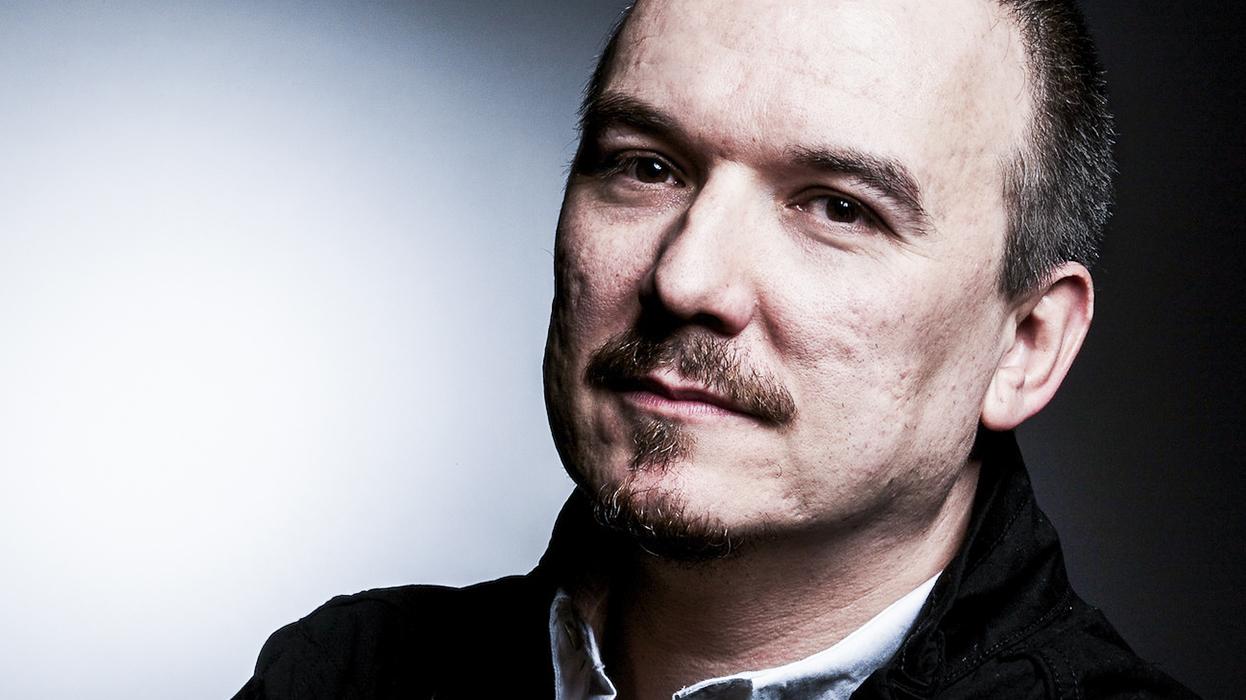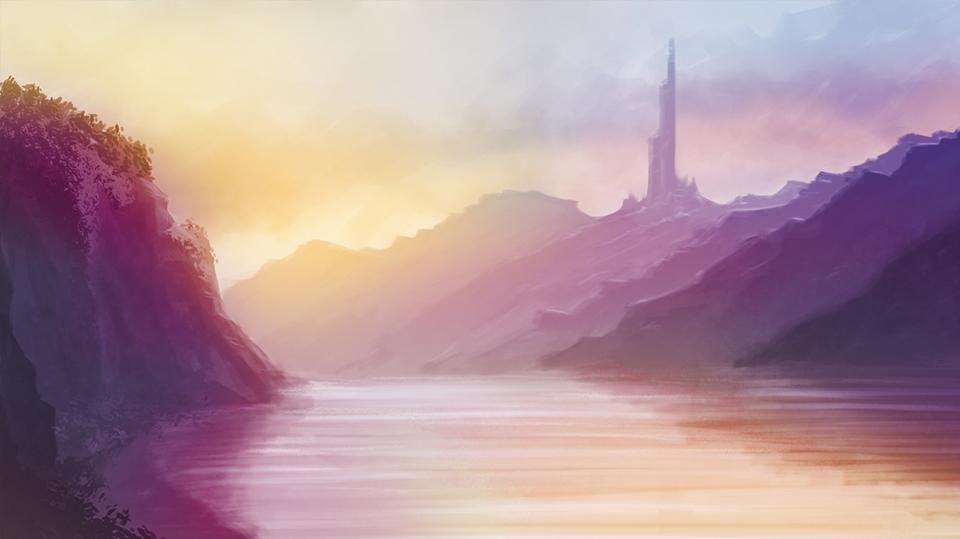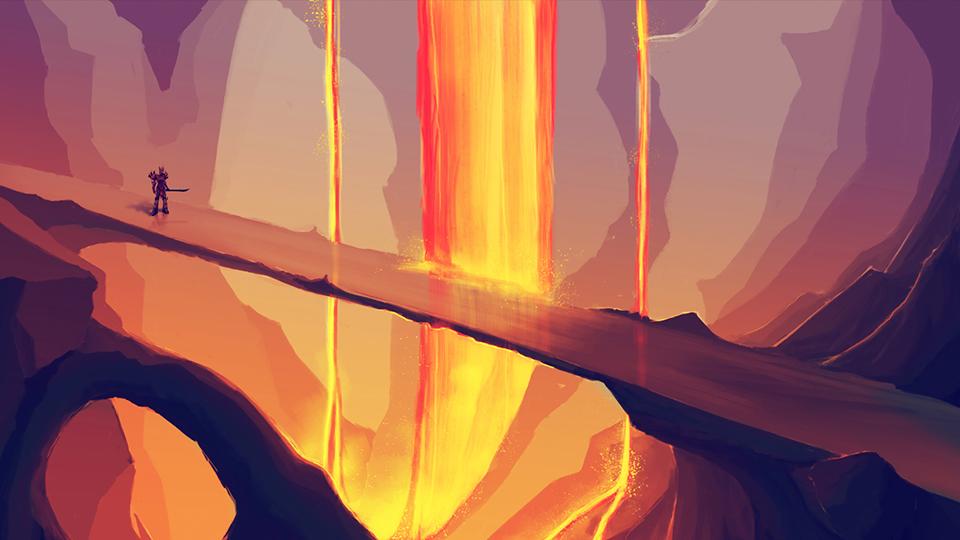Goldsmiths welcomes new joint-head of MA Computer Games Art and Design
Primary page content
This September we welcome our first cohort of students to the new MA in Computer Games Art & Design and welcome a new co-head of the programme, digital artist Ian Palmer.

We caught up with Ian (before he goes on a quick pre-term motorbike trip to the Alps) to talk early computers, career highlights, and his all-time favourite games.
“I’ve been into computers from the age of eight, way back in 1980 when I got my first one,” Ian says. “It was a Sinclair ZX80! Being part of the ‘cultural boom’ of home computing was something I’ve always been very proud to have lived through and I still remember how through my teenage years I was regarded as a nerd because I had a computer – long before nerds were regarded as cool.”
“I have fond memories of my BBC Micro, circa 1984, and in particular my first real gaming addiction – Elite. I was always an avid gamer during this period and remember wasting countless hours typing in code from the back of computer magazines and then debugging the typing errors! Such fun..”
Mixing art with computers was something still very much in its infancy during this period and it wasn’t until Ian was in his 20s and studying at art college that he started using digital tools like early Photoshop and Corel Paint to create.
“My plan at the time was to move into practical model-making for film and SFX and I took a degree in 3D Design – creative model-making. It was during the first term of my BA that I was introduced to 3d Studio R3 and that was it, I was hooked. I never went back in the workshop again.
“Thankfully being a new degree course, my lecturers and course leaders were interested in seeing how I would develop and I was pretty much left to my own devices, creating 3D visualisations of ideas as opposed to practical ones.”

After graduating, Ian went to work for a west London publishing company, setting up a team to work on creating the visuals for a 90-part encyclopaedia – a demanding job where they were expected to create up to 40 illustrations a week. “It was cool,” he recalls. “I still have the archive disks of the hundreds of models we created. I guess you could say that this was a period where I really started to hone my craft as a 3D artist and it was certainly a very creative time.”
In 2001 Ian was looking for a new challenge and speculatively applied for a job at Argonaut Games, despite having no game art experience. He was offered the job and spent four years with Argonaut, working his way up to Senior Artist before they sadly closed doors in 2004.
Moving to Criterion Games in 2005, Ian worked on first-person-shooter game Black which at that time was very much in pre-production, and then on the “relentlessly intense” Burnout Revenge. “After a pretty hectic few months we finished Burnout Revenge and I still regard it as one of titles I am most proud of,” he says. “There was a lot of blood, sweat and tears from everyone involved in that game.”
“I was asked to head up an art team at EA’s main UK office after finishing Burnout Revenge. I went to work on a small team developing games for the Playstation Portable (PSP), which then led to me working on another Burnout title, an action role-playing game for the Nintendo DS, a Need for Speed title, an oddball 2D puzzle game called Create and some Harry Potter magic sprinkled in there somewhere too!”
Moving to Codemasters in 2011, Ian began developing titles for the UNITY platform - a fairly new piece of middleware which was starting to make waves in the industry. He explains: “Here I was introduced to service based gaming and it was certainly a huge challenge designing games which had to be packaged up, visually scalable and fit within download limits. It was also here that I got the chance to develop for the iPad and iPhone. Luckily having experience in developing for hand-held platforms from my days at EA, it wasn’t too much of a culture shock and I enjoyed the experience immensely.”
So why the move into teaching? Ian says that it’s something that he’s always wanted to do: “Even when I was a student myself, I always knew that someday it would be me up there talking to the group and giving direction and guidance to the next generation of artists. It feels like a natural progression to be moving into more of a mentoring role, and a recent guest lecturer post at DeMontfort in Leicester only served to reinforce that lecturing was something I should do.”

This term we welcome the first cohort of students to a new MA in Computer Games Art & Design, based in the Department of Computing and run by Ian, Professor William Latham and Professor Frederic Fol Leymarie.
It’s a course that responds to the pressing need for a high quality postgraduate degree serving the computer games and entertainment industries. With an emphasis on games design, art and animation, students will also develop the fundamentals of computer programming, entrepreneurship, and their own practice. They’ll be given the opportunity to work with a wide range of industry partners, graduating well-positioned to have a career in an exciting global industry.
“The opportunity to teach on the MA Computer Games Art & Design course at Goldsmiths is something which I am very proud to be given the chance to participate in,” says Ian.
“I’m looking to approach the course from a very practical standpoint and want to teach the students both industry relevant practices and put them in similar scenarios which they will face while working in a development studio.
“Employability is my key focus on this course – ensuring that students have the knowledge, insight and relevant skills to make an impact as soon as they start working for their first employer.”
After more than three decades of gaming, it must be tough to choose your favourite games. But if you had to, what would they be?
“TIE Fighter for the PC in 1994, Deus Ex (PC 2000), 2007’s Bioshock on the Xbox360, Harpoon (1990) and X-Com Enemy Unknown – the 1994 version, although the recent remake is excellent as well.
“There are some great games out now but these are the ones that I look back on and think, those were really quite special to me.”
Find out more about MA Computer Games Art & Design at Goldsmiths.
(Images © Ian Palmer)